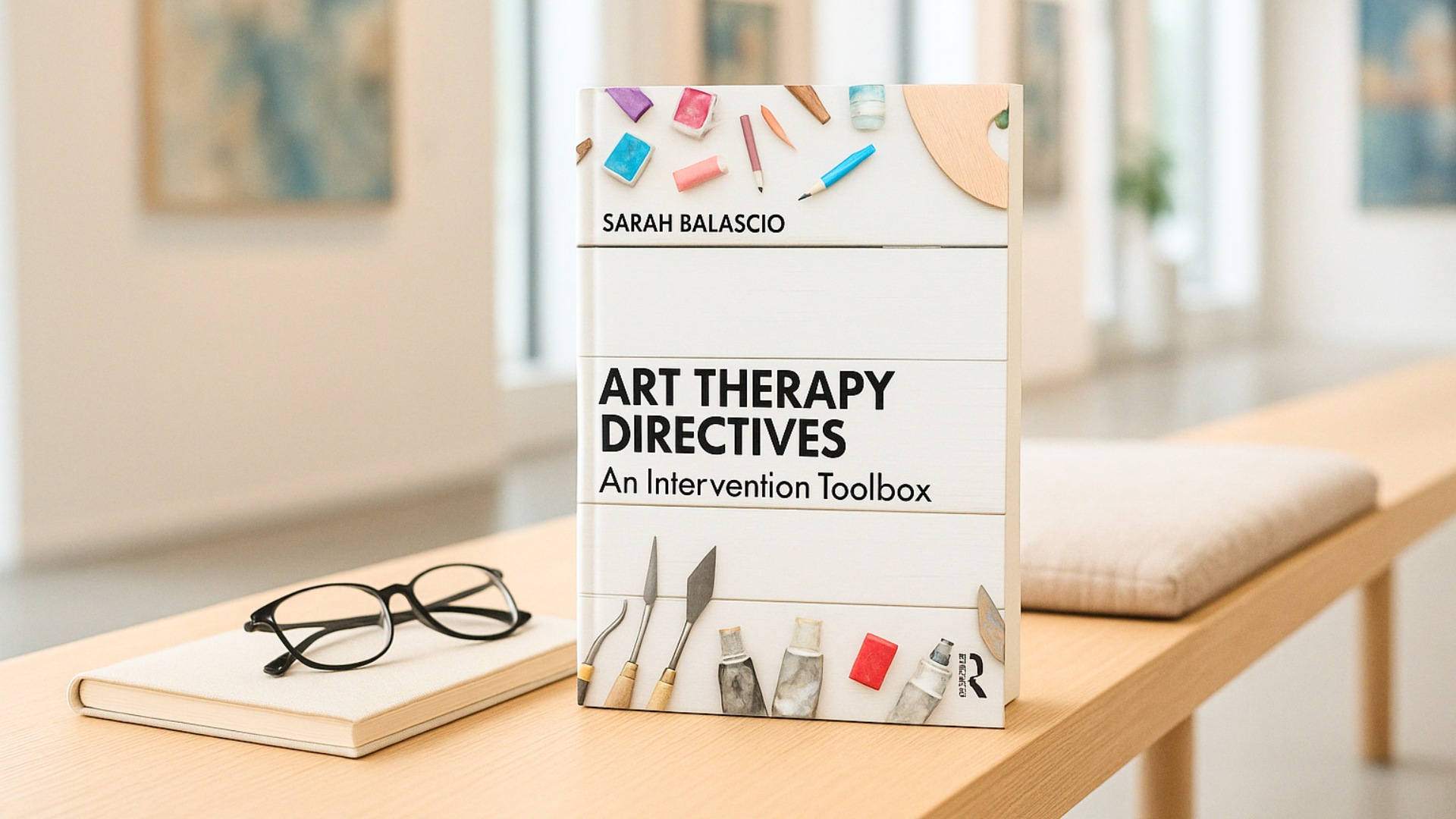Art-Based Interventions That Support Emotional Growth

Book Review: Art Therapy Directives by Sarah Balascio
A practical toolbox for clinicians supporting creative healing
In Art Therapy Directives, Sarah Balascio offers a grounded, resource-rich guide for therapists, educators, and clinicians looking to bring more structure and creativity into their therapeutic practice. This isn’t a book about lofty theory or philosophical reflection. It is a hands-on collection of clear, adaptable art prompts intended to support a wide range of emotional, behavioural, and cognitive goals. With warmth and clarity, Balascio invites readers to use art not as decoration, but as direction.
What the book promises
This book promises to be a practical toolbox for professionals who use or want to integrate art therapy techniques into their work. Balascio, a board-certified art therapist, aims to demystify the process by offering tried-and-true interventions that don’t require advanced artistic training or extensive preparation. The goal is to make art therapy more approachable and useful in real-world settings, especially for those working in schools, hospitals, community programs, or private practice.
Rather than focusing on specific diagnoses or populations, the book offers a modular format that allows users to adapt each directive to their unique client base. Balascio’s tone throughout is inclusive and accessible. She understands that time, budget, and experience levels vary, and she offers flexibility at every turn.
What the book delivers
Balascio delivers on her promise with a well-organized, clearly written resource. The directives are grouped into meaningful categories such as identity, self-regulation, interpersonal relationships, and mindfulness. Each directive includes a brief description of its therapeutic purpose, suggested materials, step-by-step instructions, and reflective questions.
These aren’t abstract ideas or complex theories. They are direct, user-friendly prompts like “Create a Safe Place Collage,” “Emotion Mandala,” or “Draw a Time Machine.” While the projects are deceptively simple, many contain layers of depth when paired with thoughtful facilitation and discussion.
What stands out is the clarity of the format. Clinicians will appreciate the immediate usability of each directive. The book reads less like a textbook and more like a trusted reference binder—a collection you might keep on your desk and return to again and again.
Style and structure
Balascio’s writing is practical, reassuring, and confident. She avoids jargon while still acknowledging the psychological roots of each exercise. The structure is consistent throughout, which supports ease of use for busy practitioners who may be flipping through in the middle of session planning.
Each directive stands on its own and includes guidance for adaptation. For example, many entries offer variations for different age groups, verbal prompts for group discussions, or ways to simplify materials for clients with limited access or physical challenges.
The introduction offers a helpful context for how and why these exercises were developed, including Balascio’s experience working with a diverse range of clients. It also outlines key considerations for ethical and sensitive facilitation.
Where the book shines
Balascio excels at making art therapy feel both approachable and effective. She meets the reader where they are, whether they are seasoned clinicians or newcomers to creative approaches. The directives are designed to lower the barrier to entry while still offering emotional depth.
The inclusion of client-focused reflection questions elevates each exercise from activity to intervention. These prompts help facilitate insight, self-awareness, and emotional expression. At the same time, Balascio avoids overinterpreting or assigning rigid meanings to visual symbols, which allows for client agency and interpretive flexibility.
Her years of experience are evident, not in academic references, but in the way each directive anticipates possible client responses and provides options for redirection or deepening.
Light limitations
While the book’s directive-based format is its greatest strength, it does leave out some of the theoretical context that might be helpful for new clinicians. Readers unfamiliar with the principles of art therapy may benefit from pairing this book with a more foundational text or supervision to understand the nuances of processing client artwork and trauma responses.
Some directives rely on materials like pastels, canvas, or collage items, which may not be accessible in all settings. To her credit, Balascio often notes alternatives or simplified approaches, but a more explicit section on low-cost or trauma-informed adaptations would enhance the book’s versatility.
Finally, the book is written for professionals. While its tone is accessible, it is not designed as a self-help or workbook for clients, and readers should be mindful not to use the exercises outside their scope of practice.
Final thoughts
Art Therapy Directives is a reliable and generous resource that centres the therapeutic relationship while equipping clinicians with creative tools. Balascio understands that healing often begins with expression, and she offers a clear pathway to support that process without pressure or perfectionism.
This is not a flashy or conceptual book. It is a workhorse resource for those doing the quiet, steady work of holding space for others. For clinicians, educators, and community workers seeking tangible tools to support emotional growth through art, this book will become a staple.
Highly recommended for professionals looking for accessible, adaptable, and purpose-driven art therapy exercises that support reflection, emotional regulation, and creative resilience.